Books
Books
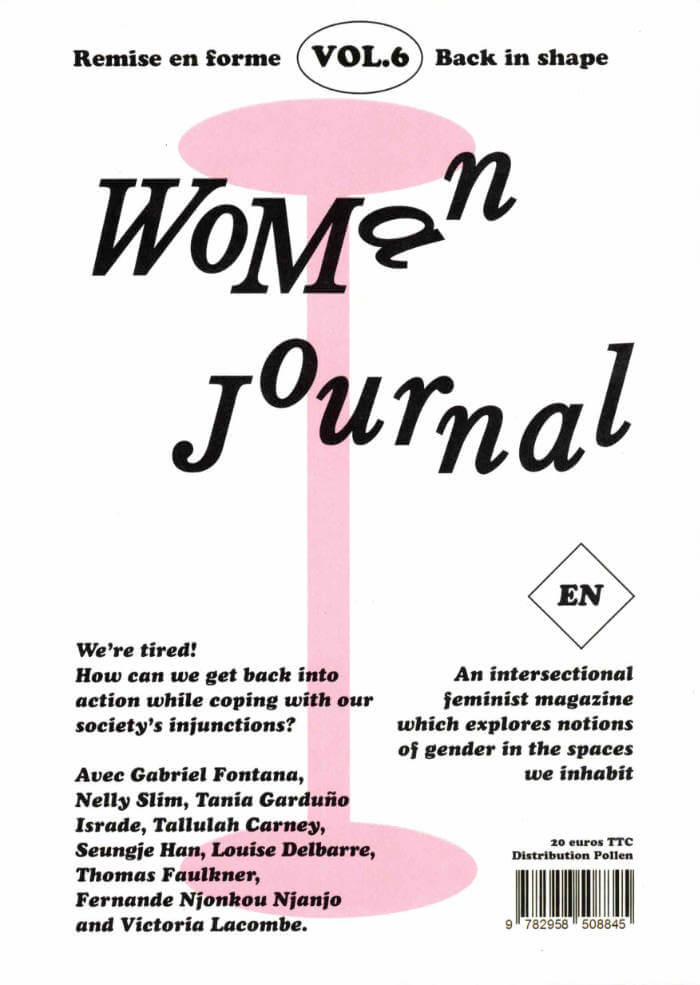
Woman Journal Vol. 6: Back in Shape
Do we always have to be nice, kind and communicate respectfully? Wouldn't it sometimes be better to change our tone, to use force or even violence? We often want to act in a spirit of “care” and benevolence, but how do we know if we're really being altruistic and sympathetic? Vol.5 asks the question: Nice?
With contributions from :
Muf architecture/art, Mélanie Mazet, Bui Quy Son, Paul-Antoine Lucas, Armelle Breuil, Annabelle Vaillant, Napsugár Trömböczky, Alessandro Di Egidio,
Elsa Muller, Clara Lenoir, Léo Jacqmin, Clem Koren, Pola Noury, Grève cœur and Cassiane C. Pfund
This publication is edited by the Woman Cave collective founded by Leticia Chanliau and Chloé Macary-Carney.
318 black & white pages, brown cover
Micro edition of 700, printed in Aubervilliers by Isiprint.
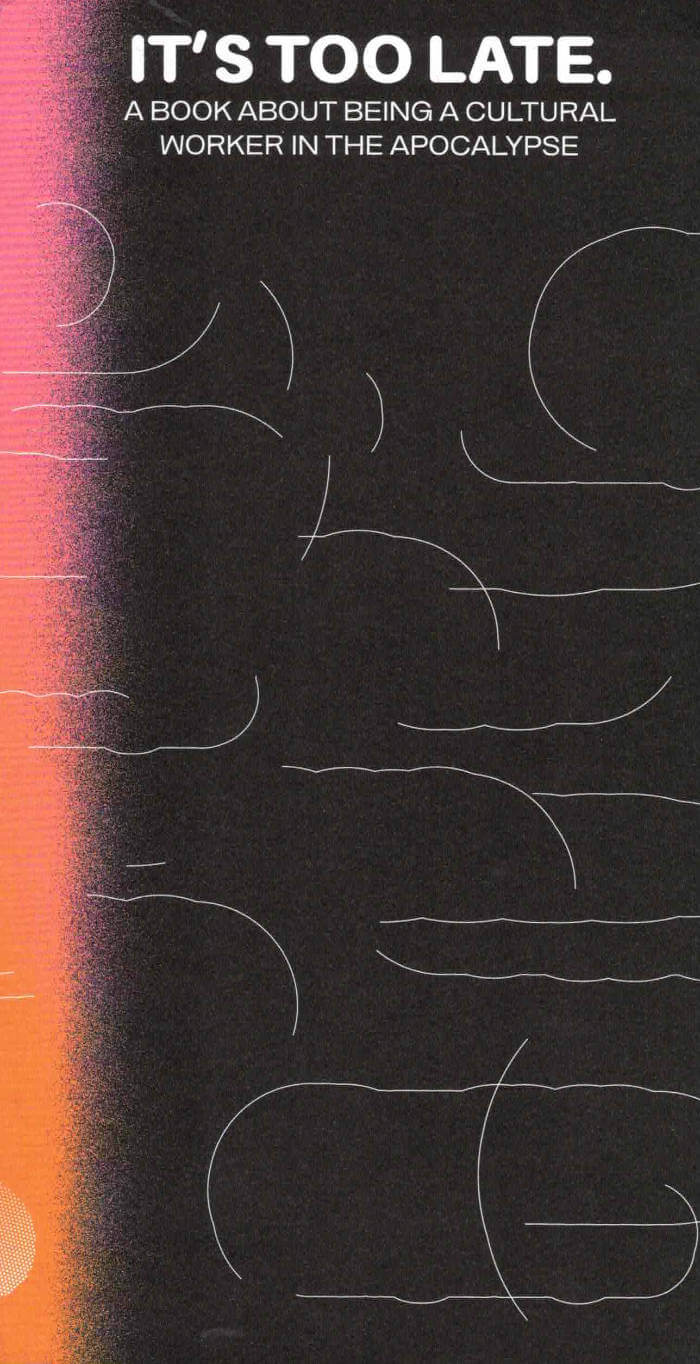
It's Too Late. Do It Anyway!
Cassie Thornton, Magdalena Jadwiga Härtelova
Hey culture worker! Are you feeling alone and afraid while the world burns? It’s Too Late. Do It Anyway! is two books in one, created for cultural workers who want to get off the racial capitalist high-speed-train-to-nowhere and start structuring revolution through collective care.
It’s Too Late. Do It Anyway! offers two routes into a fractal support network designed to shed absurd, useless forms of artworld prestige in favor of collectively producing a world organized to support caregivers. It’s Too Late tells the true story of an exhibition about care that exposed the difference between making symbolic gestures and actually doing something. Do It Anyway! serves as a manual for The Hologram, a prism-shaped collective care protocol conceptualized by artist Cassie Thornton, inspired by the Social Solidarity Clinic of Thessaloniki in Greece, and now practiced by people all over the world.
In It’s Too Late. Do It Anyway! multiple voices weave The Hologram into the present, the past, and the future all at once, ultimately putting the story and the tools it describes into each reader’s life-wizened hands. This is not really a book; it’s a pathway out of the tough spot we are all in right now. Anyone can make use of it, even you.
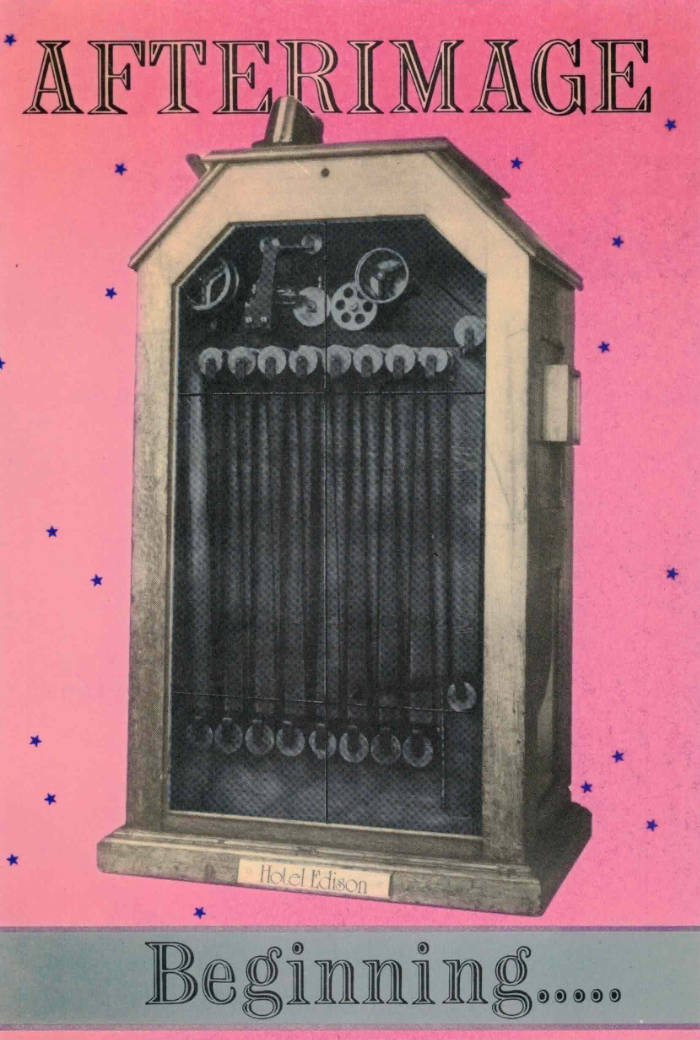
Afterimage Nos. 8/9, Beginning … and Beginning Again
The independent British film journal Afterimage published thirteen issues between 1970 and 1987. International in scope, it surveyed the many forms of radical cinema during an extraordinary period of film history. Having emerged in the wake of post-1968 cultural and political change, Afterimage charted contemporary developments with special issues on themes such as the avant-garde, Latin American cinema and visionary animation, and also looked back at early film pioneers. It published many of the leading critics of the period and vitally provided a forum for filmmakers’ writings and manifestos.
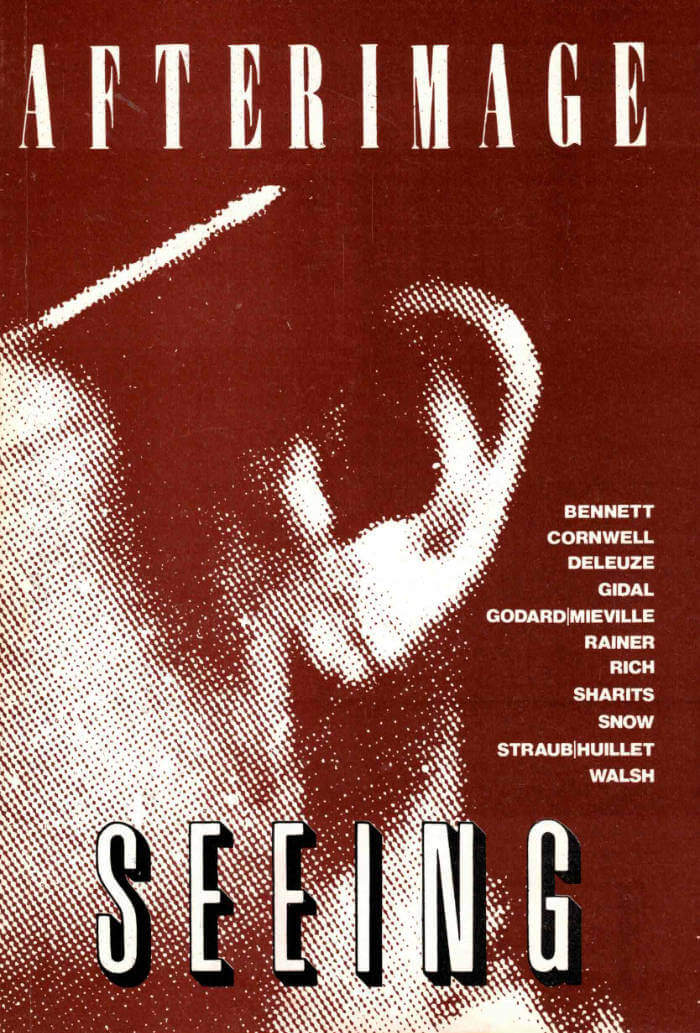
Afterimage No. 7, Seeing: Hearing
The independent British film journal Afterimage published thirteen issues between 1970 and 1987. International in scope, it surveyed the many forms of radical cinema during an extraordinary period of film history. Having emerged in the wake of post-1968 cultural and political change, Afterimage charted contemporary developments with special issues on themes such as the avant-garde, Latin American cinema and visionary animation, and also looked back at early film pioneers. It published many of the leading critics of the period and vitally provided a forum for filmmakers’ writings and manifestos.
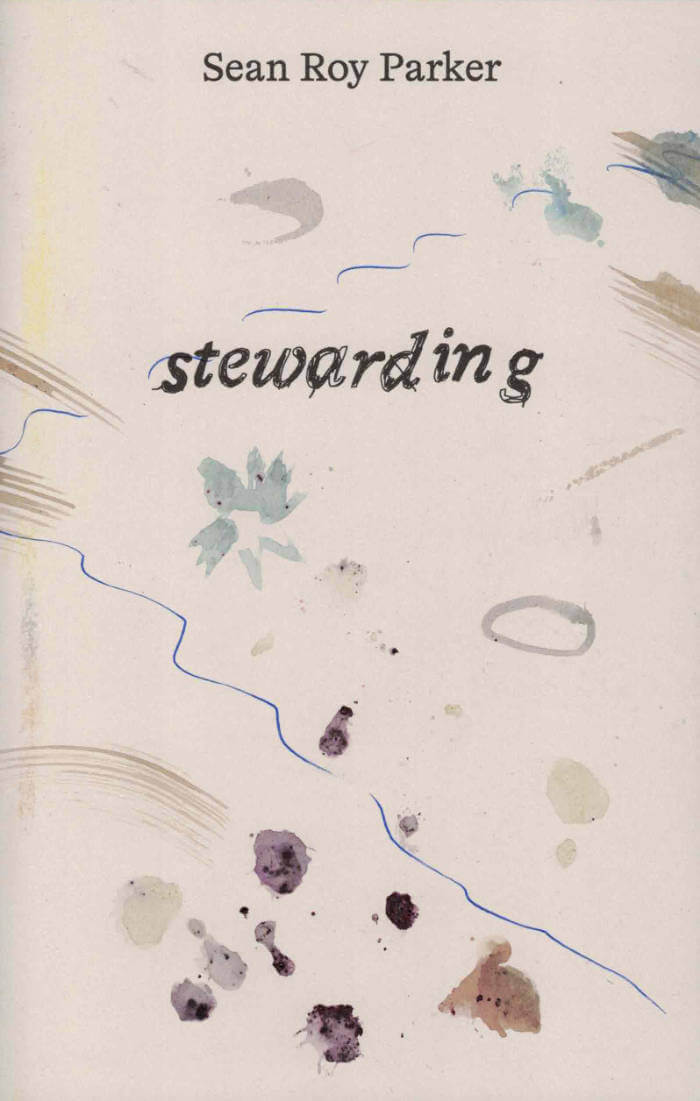
stewarding
stewarding maps the joyful and embodied ways we can resist oppressive structures that control our food, housing, and socialisation. We begin in an abandoned school, previously the union headquarters for a coal board, which became a legal guardianship, now condemned. We witness acts of communing between human inhabitants, composting worms, microbes in fermentation, and learn working class histories along the way. Here, complex networks emerge between agents, and thrive, disrupting the monolithic power of corporate extraction. Sean Roy Parker’s debut collection of poetry is a generous account of hopeful ways to eat and ways to live.
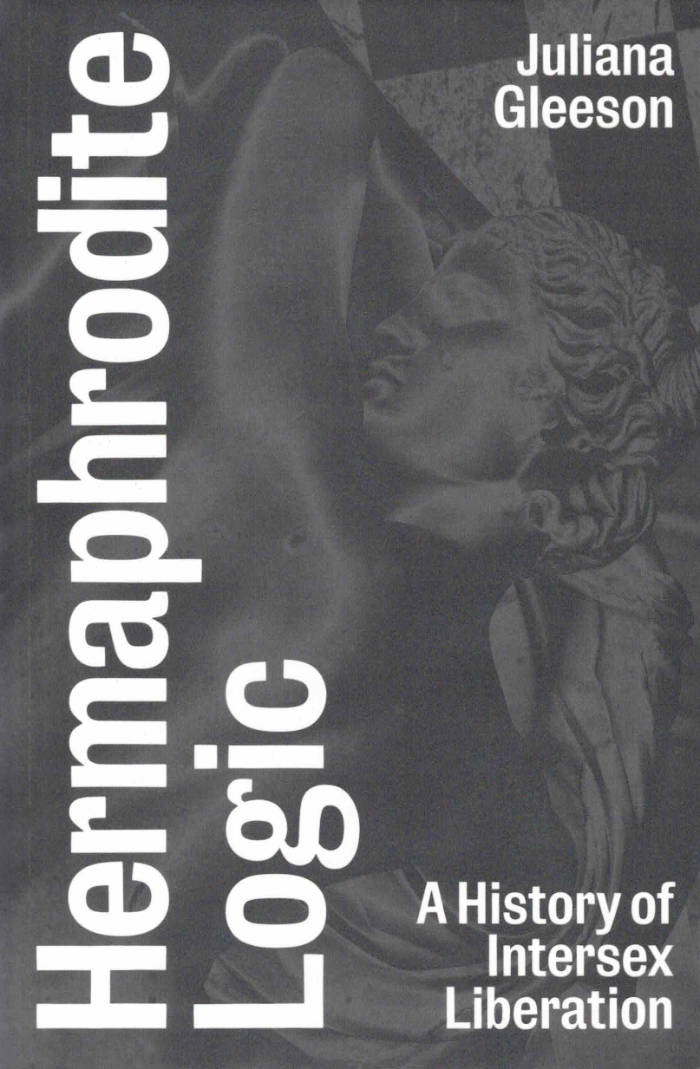
Hermaphrodite Logic: A History of Intersex Liberationv
How the intersex liberation movement exposed medical harms and became an inspiration to rethink sex and gender.
Hermaphrodite Logic is a bold examination of intersex liberation. Juliana Gleeson reveals how a movement challenged systemic medical abuses to reshape our understanding of sex. Blending philosophical insights and personal testimonies, Gleeson argues that intersex people have been harmed not just for therapeutic reasons but to ease professional and parental anxieties.

Al Hayya Issue 04 / Dreams of Liberation
Issue #4 of Al Hayya traces resistance in the home, on the streets, across borders, and within the self. From Gaza, where genocide compresses time into isolated minutes, to everyday acts of defiance in diaspora, it explores the weight of struggle as both personal and collective. Featuring a rare interview with Palestinian revolutionary Leila Khaled, a conversation with Françoise Vergès, photo essays by Maen Hammad, Amal Al-Nakhala, Nader Bahsoun, Sarah Kontar, and Hannah La Follette Ryan, and reflections on sound, memory, and political devotion—this issue makes clear that resistance is not always loud.

The Whitney Review Issue 4
Interviews with Claudia Rankine, Vigdis Hjorth, Tama Janowitz, and Walter K. Scott. Essays on Blaxploitation, the Brontë sisters, and Kevin Killian's Amazon reviews. Plus comics, poetry, and The Whitney Review's signature chorus of short-format reviews.
Contributors include A. S. Hamrah, E. Jane, Bruce LaBruce, Oscar yi Hou, Alex Auder, Olivia Kan-Sperling, Tao Lin, Amber Later, Brad Phillips, Brandon Harris, Nicolaia Rips, Julien Ceccaldi, Linda Simpson, Michael Bullock, Jaakko Pallasvuo, Geoffrey Mak, Joseph Akel, Candystore, Taylor Lewandowski, Max Battle, and many more.
Abolish Rent, fag/hag, Dear Dickhead, Tweakerworld, and Napalm in the Heart are among the books reviewed. Steven Phillips-Horst skewers c* ns* r*d instagram captions. Max Steele asks can masochism be gentrified? Published biannually, The Whitney Review of New Writing is a bold expansion of literary criticism. The fourth issue is about clowns, sell-outs, loneliness, and fancy.
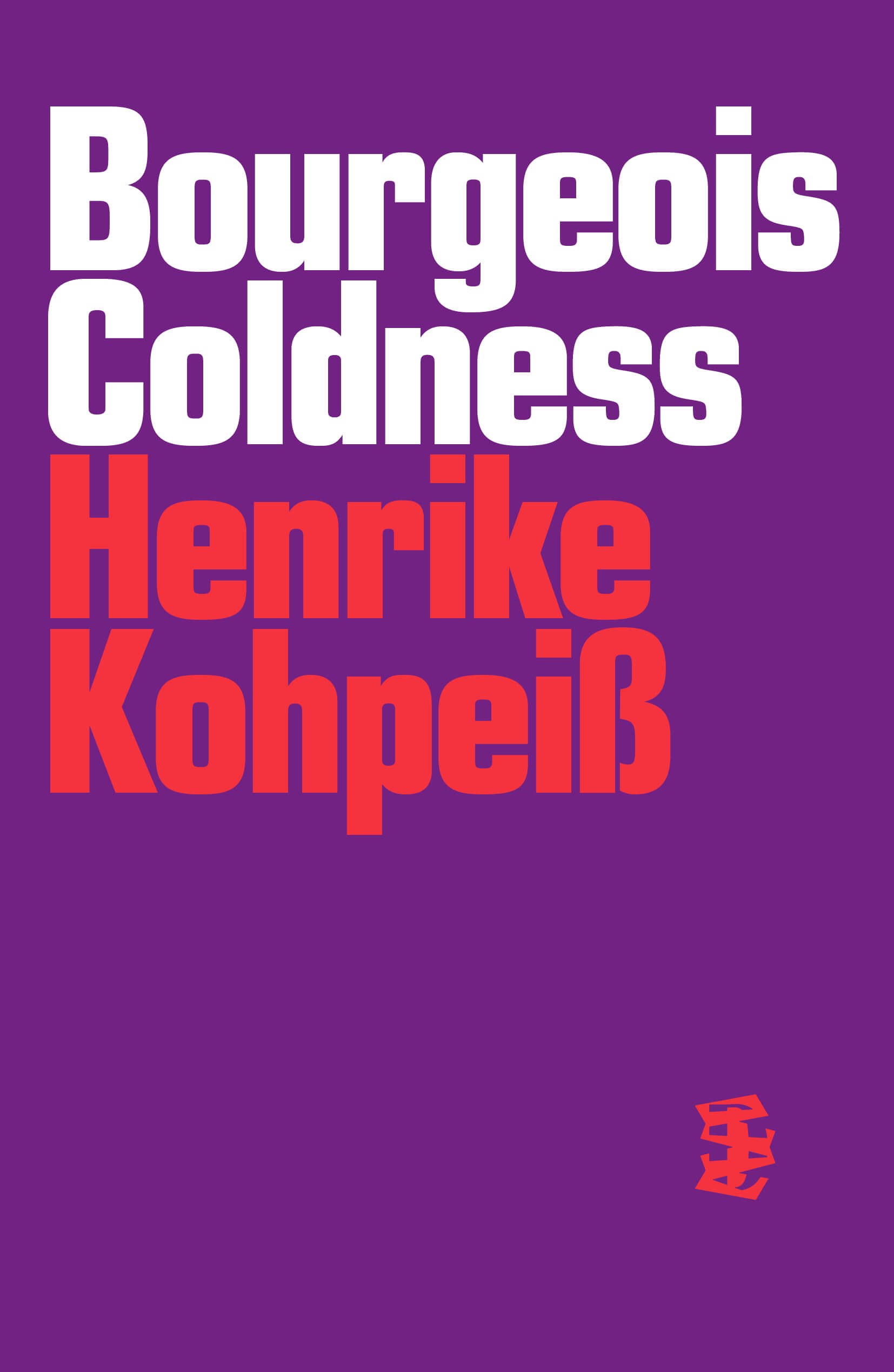
Bourgeois Coldness
Bourgeois coldness refers to an affective strategy that offers an explanation for how self-preservation works. Bourgeois coldness is one of the most advanced affective and aesthetic forms of preserving the structure of the colonial status quo. It creates an affective shelter in the world, unencroached upon by the immediate consequences of its many catastrophes. It functions like air conditioning – a complex technology which reliably stabilises the climate until those inside consider it natural. Bourgeois spaces – institutional and affective – stay cool and pleasant. But outside it’s burning.
Canonical critical theory by Adorno and Horkheimer enters a dialogue with Black studies through Hartman and Moten.
Foregrounding affect, this timely book provides an inestimable philosophical argument for the centrality of Blackness in critical examinations of capitalism’s violence. —Denise Ferreira da Silva
Elegant and erudite in equal measure, this book will stand as a landmark diagnosis of the practices of denial in our time. —Andreas Malm

Narcissus. Looking into an (artificial) well of fountain
This publication shows the content of the folder ‘Narcissus. Gazing into an (artificial) well of fountain’. This folder is one of the 18.000 subject folders that are kept in the photographic collection at the Warburg Institute in London. This iconographically organized archive contains reproductions of sculptures, paintings, drawings, prints, tapestries, and other forms of imagery, ranging in date from classical antiquity to circa 1800. All the photographs in this publication were taken on July 2th 2023.
Many thanks to Paul Taylor, Curator of the Photographic Collection, Warburg Institute, London.
Second edition

Elke dag is een tentoonstelling
Special edition: 100 out of 300 books are reworked by making cutouts in the book.
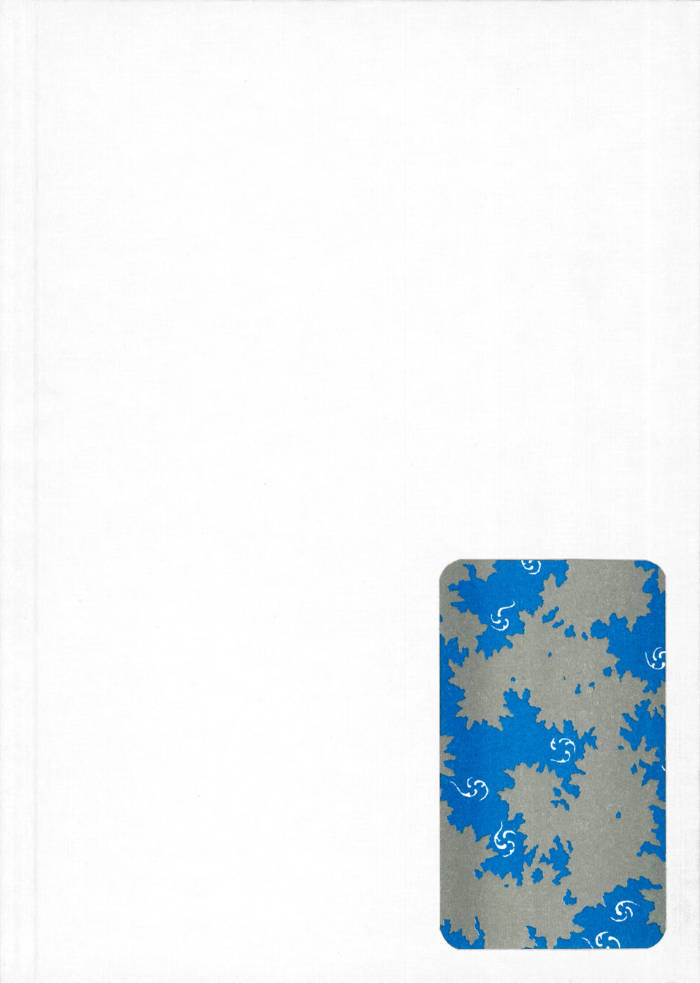
Elemental Magic: Earth, Water, Fire, Air
Elemental Magic: Earth, Water, Fire, Air is a tactile handbook, woven from the elemental forces that shape our world and inner selves. In tarot, these four elements are foundational energies that give life to each suit—Earth grounds us in the material, Water carries our emotional depths, Fire fuels passion and will, and Air clarifies thought and perception. Rather than offering escape, ‘magic’ is an invitation to foster a practice of attention and attunement to the sacred mundane.
Designed by Cleo Tsw.
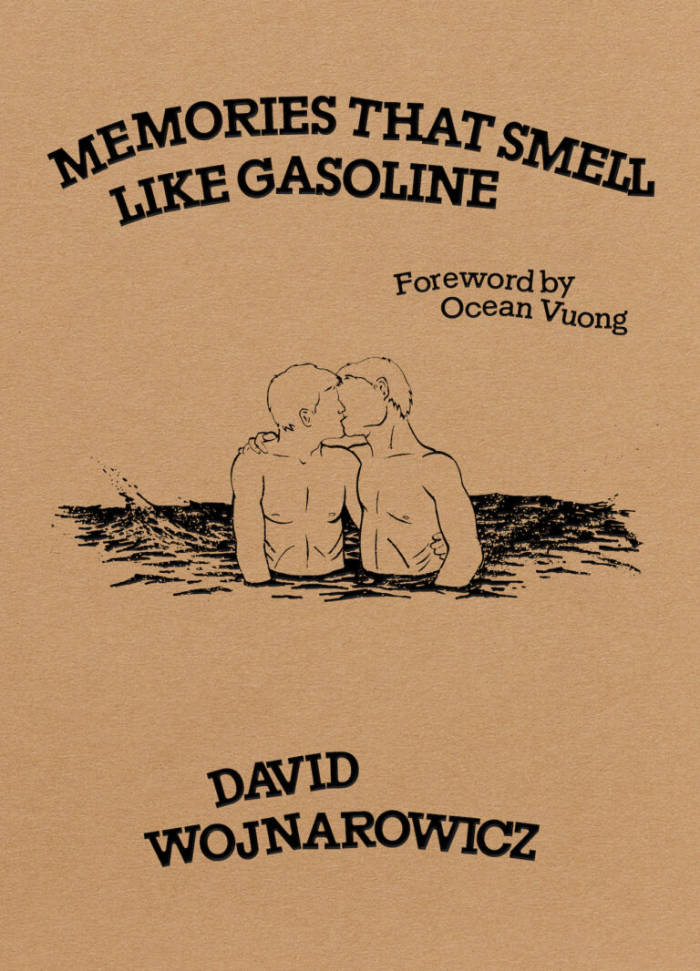
Memories That Smell Like Gasoline
David Wojnarowicz, one of the most provocative artists of his generation, explores memory, violence, and the erotism of public space—all under the specter of AIDS.
Here are David Wojnarowicz’s most intimate stories and sketches, from the full spectrum of his life as an artist and AIDS activist. Four sections—”Into the Drift and Sway,” “Doing Time in a Disposable Body,” “Spiral,” and “Memories that Smell like Gasoline”—are made of images and indictments of a precocious adolescence, and his later adventures in the streets of New York. Combining text and image, tenderness and rage, Wojnarowicz’s Memories That Smell Like Gasoline is a disavowal of the world that wanted him dead, and a radical insistence on life.
The new and revised edition features a foreword by Ocean Vuong and a note from the editor, Amy Scholder.
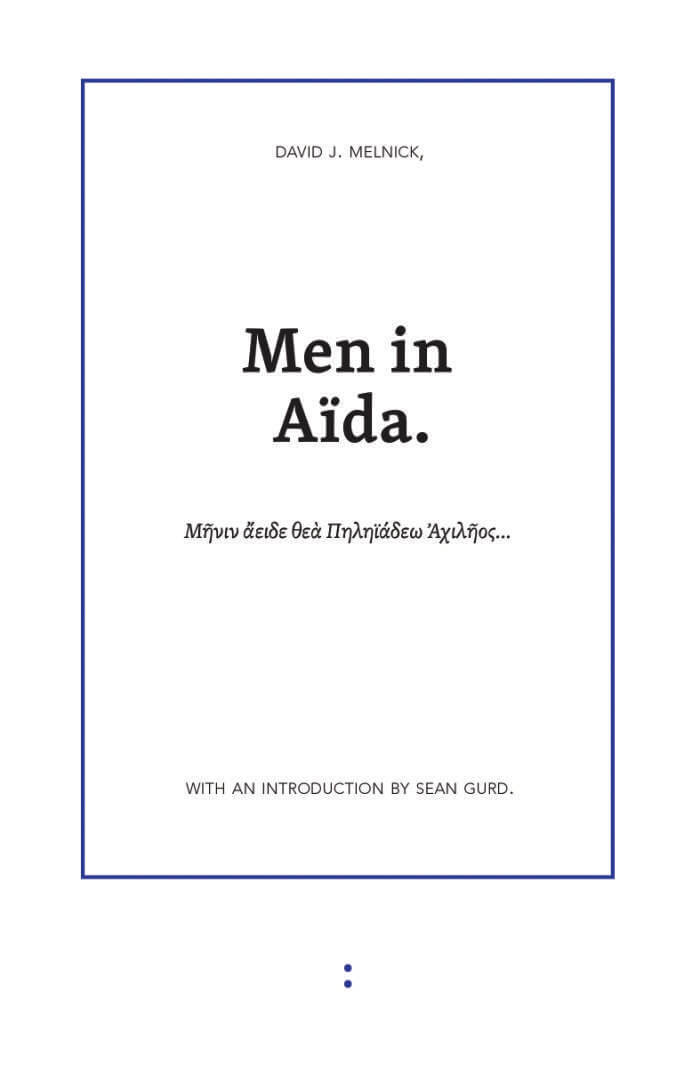
Men in Aïda
David J. Melnick published the first book of Men in Aida, a homophonic, but also homoeroticized translation of Homer's epic Iliad, in December 1983 in an edition of 450 at Tuumba Press. After appearing in many guises and fragments, Book Two was published online in 2002 as part of the Eclipse Archive. Book Three appears for the first time in the present publication, which brings together all three books of one of the most important American avant-garde poems.
According to Sean Gurd, who wrote the introduction to this unified edition: "The labor of more than 20 years, Men in Aïda filters the sound of Homer's Iliad through the words and phraseology of English. Far more than an exercise in homophonic translation, David J. Melnick's epoch-marking poem packs thousands of years of linguistic history into three riotous books."
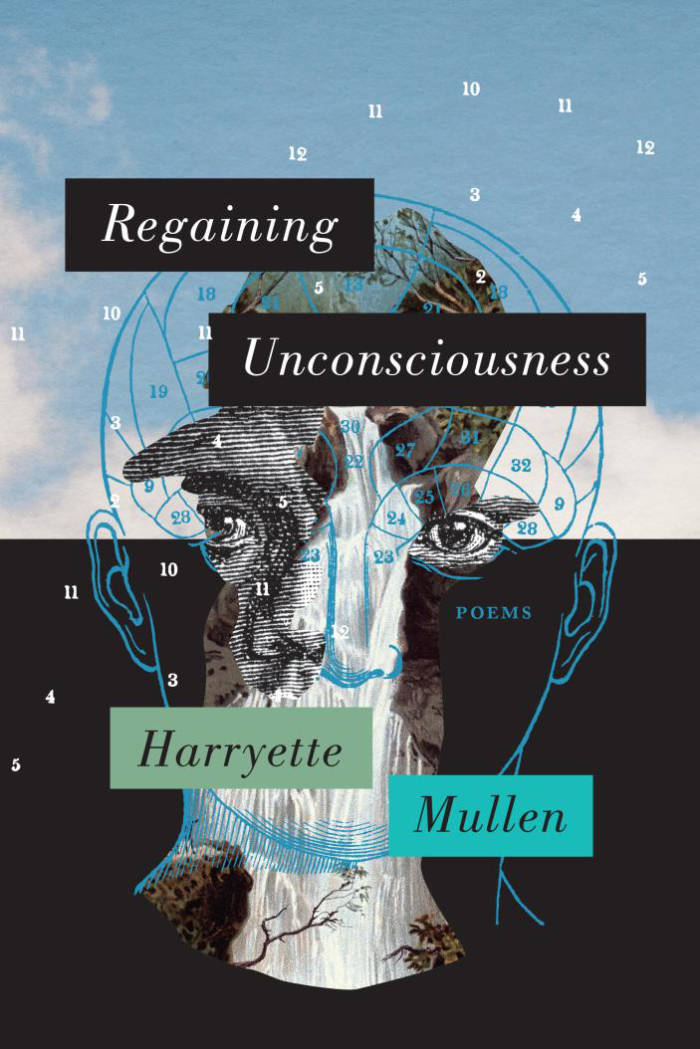
Regaining Unconsciousness: Poems
Harryette Mullen is one of contemporary poetry’s most influential voices, for her inventive language play, keen wit, formal experimentation, and pointed critique of American culture. In Regaining Unconsciousness, her first new collection in twelve years, Mullen confronts the imminent dangers of our present to sound an alarm for our future, to wake us out of our complicity and despondency: Can we, even still, find our way to our unconscious selves, beyond our capacity to harm, subdue, and consume?
In eleven taut sections written in the eleventh hour of our collective being, these poems address climate change, corporate greed, racist violence, artificial intelligence, the pollution of our oceans, individualism at the cost of mutual wellness, and the consequences of not addressing these pressing issues. Mullen imagines, as we must, our apocalypse, and yet, in an astounding feat, she does so with playfulness and wry referentiality that make these poems surprisingly buoyant, funny, and readable. Our end may be inevitable, Mullen admits, but maybe we begin with gratitude.
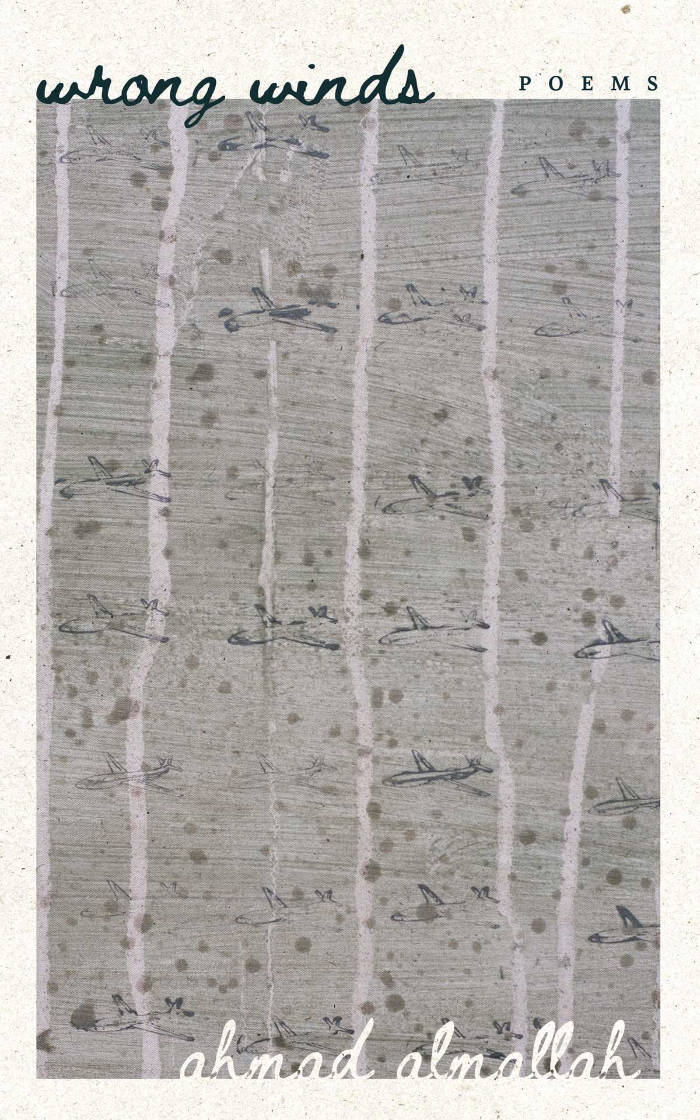
Wrong Winds
Ahmad Almallah’s third poetry collection considers the impossible task of being a Palestinian in the world today.
When genocide is the question, can the answer be anything but wrong? In Wrong Winds, written during the first months of Israel’s genocidal assault on Gaza, Palestinian-American poet Ahmad Almallah converses with the screams echoing throughout the West. Traversing European cities, Almallah encounters the impossibility of being a Palestinian, left alone in a world full of sympathizers and enemies. Through a continuous unsettling of words and places, considering the broken voices of Western poetry (Eliot, Lorca, and Celan, among others), the poems in Wrong Winds discover the world again and form an impossible dialogue with the dead and dying.

And so on, a single universe
A collection of Pauline Julier’s art that expands from the terrestrial to the cosmos to comment on our place in the universe.
At the interface of documentary and fiction, the multimedia works collected in Pauline Julier take us on a dizzying journey through space and time. Julier’s art travels through the geological ages of planet Earth, through different histories, natural disasters, and the Anthropocene’s paradigm shifts and into outer space. Her background in political science and photography is reflected in her work: looking into the past and the future, she investigates topical questions about our unlimited use of natural resources, escapism, and the colonization of space.
Conceived and designed as a work of art in its own right, this volume offers a comprehensive insight into Julier’s art and thought through a conversation with eminent scholar of science and technology studies Donna Haraway alongside contributions by curator Céline Eidenbenz, anthropologist, and writer Nastassja Martin, and art historian, curator, and author Chus Martínez.
Edited by Céline Eidenbenz and Sarah Mühlebach.
With Contributions by Donna Haraway, Pauline Julier, Nastassja Martin, and Chus Martínez.
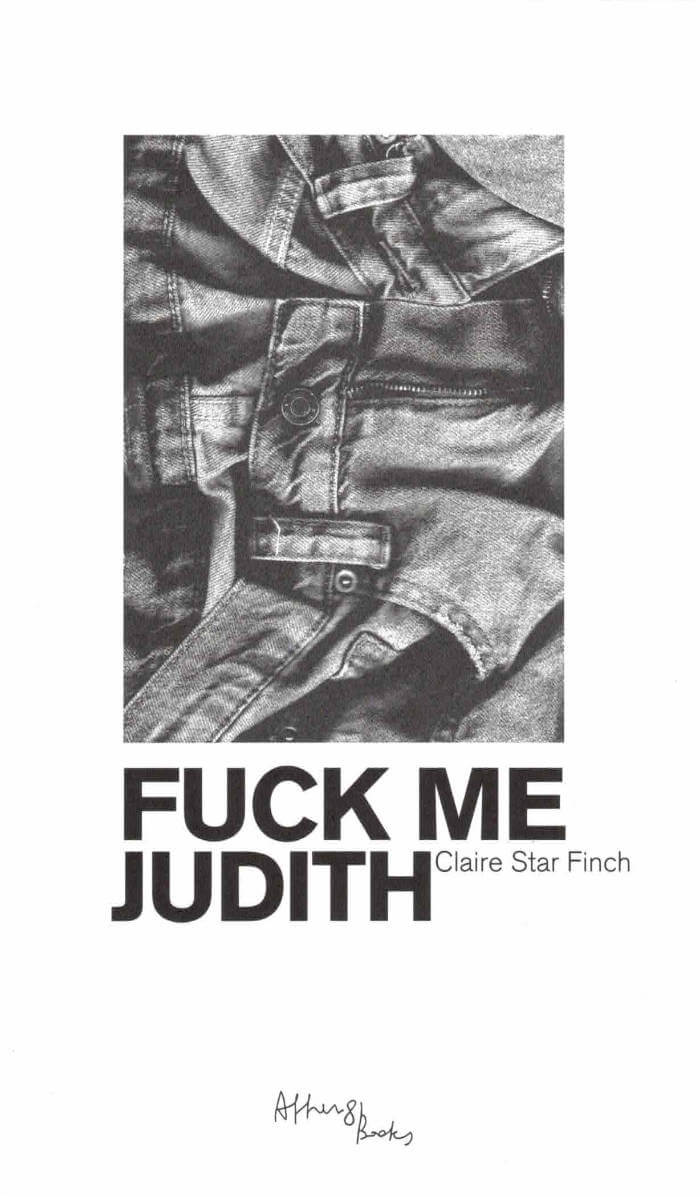
Fuck Me Judith
In Claire Star Finch’s first novel, love and the void question each other in action.
Judith, an academic celebrity, and Wendy, a slightly less famous academic celebrity, fall in love. They break up. In her ensuing grief, Wendy finds herself in a pornographic, epistolary haze that slumps toward the narrative. Fueled by the only things that cut through the pain—sex and democratic theory—Wendy takes us along on her wild ride toward self-actualization.
Claire Star Finch is a Paris-based experimental writer & performer. Their literary performances and hybrid ficto-theories are regularly presented in art spaces, both as part of their solo work and with the collective RER Q. Their research centers on themes like dildos and vomit, defining these objects as forms of emancipatory literary technologies.
They published in French the experimental fiction Crache dans ma bouche puis crache dans mon autre bouche (Les Petits Matins, 2024).
Design by Victoire Le Bars
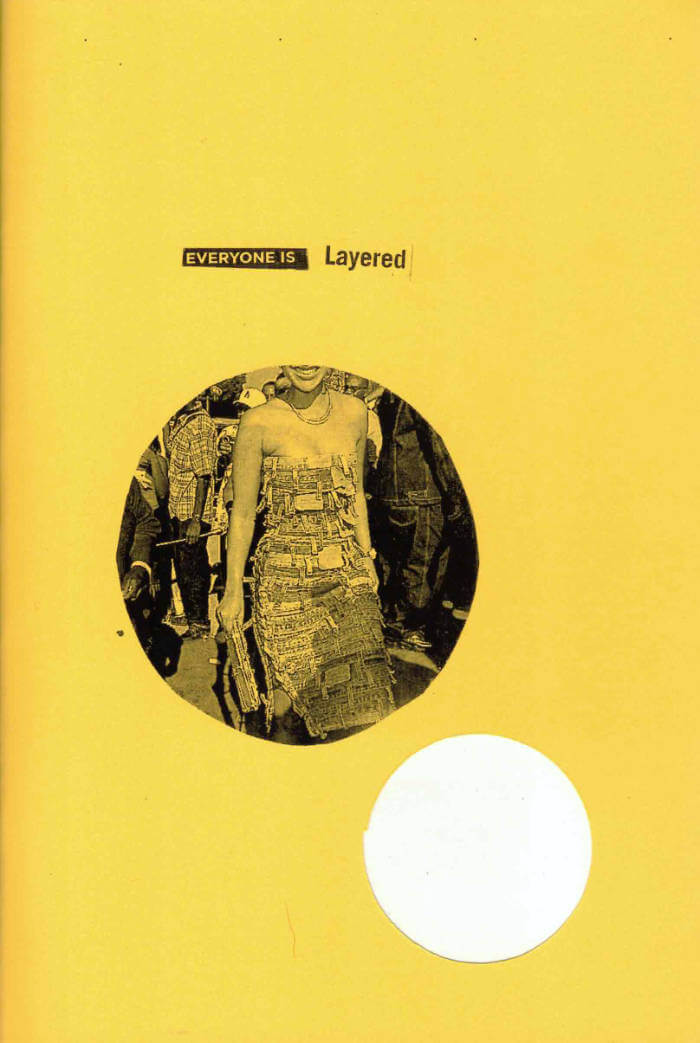
Everyone is layered
Everyone is layered is a scrapbook zine and a collection of poems made of the do’s and don’ts sections of a fashion magazine.
Layering is a great way to play with cowgirls-gone-wild.
They're perky, edgy pretty with a tank peeking out under a sense of humour
their thongs hanging out
after a few hours something
just feel silly floaty, jus-past-your-waist
shapes are miserable,
shapeless ones hourglassy.
WHERE’S HER BUTT?

Studying Hunger Journals
In 1972 Bernadette Mayer began this project as an aid to psychological counseling, writing in parallel journals so that, as she wrote in one (in bed, on subways, at parties, etc.), her psychiatrist read the other. Using colored pens to “color-code emotions,” she recorded dreams, events, memories, and reflections in a language at once free-ranging and precise—a work that creates its own poetics. She sought “a workable code, or shorthand, for the transcription of every event, every motion, every transition” of her own mind and to “perform this process of translation” on herself in the interest of evolving an innovative, inquiring language. STUDYING HUNGER JOURNALS registers this intention within a body of poetry John Ashbery has called “magnificent.”
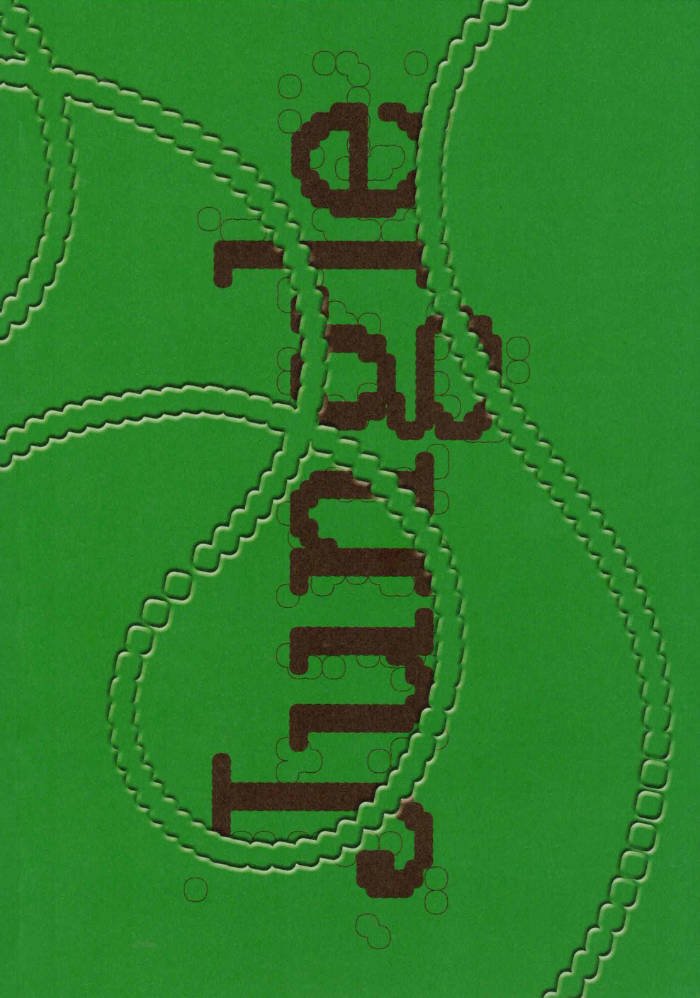
Jungle
Jungle, (the latest 2025 self-published zine offering from studio saudari), delves into The Socio-Political, The Pitfalls of Neoliberalism, Circus State, Environmental Collapse, Heterotopias & Growth ~ Decay.
Referencing Upton Sinclair’s novel The Jungle (1905), this print issue aims to combine various interpretations of The Jungle as a site of critique, of contention, of potential growth.
Contributors:
y3000w, Video Club, Fred Horton, Jordan Ossermann, Tristac Gac, Tom Hegen, Santiago Barragán, Anu Jakobson, Camille Theodet, George Nebieridze, Mu Pan, Robert Zhao Renhui, Thérèse Rafter, Cecilia Vicuña, Dani Santander Villarroel, Adam Call Roberts, Dr. Sönke Johnsen, Elena Zaghis, Miguel Garchitorena, Amanda Nell Eu, Mishka Mahomed, Dani Kyengo O'Neill / BŪJIN, Erin Jane Nelson, Mariana E. Rivas Salazar, Kim Rosario, Rachel Lamot, Marion Post Wolcott, Madina Mahomedova.
Designed by Felicia Usinto & Sera van de Water
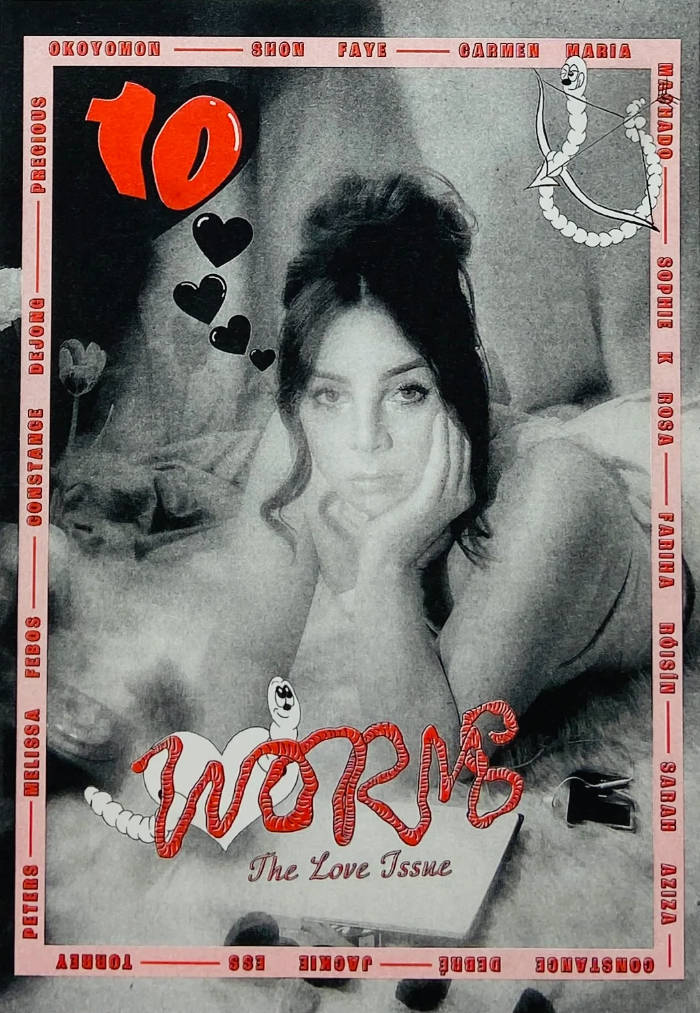
Worms #10: The Love Issue
Clem Macleod, Caitlin McLoughlin and 2 more
This latest issue of Worms invites readers into a bold and tender exploration of love in all its messy, political, and transformative guises.
Set against the backdrop of state-sanctioned transphobia in the UK and US, ongoing genocide in Gaza, and a litany of global injustices that see us staggering under the weight of collective and personal upheaval, this issue reckons with thinking and writing about love in a time of crisis. How do we take seriously the seemingly frivolous demands of love, devotion, beauty—in all their myriad and sometimes painful forms—when basic needs and rights are stripped away.
Featuring voices from at home and overseas including Shon Faye, Torrey Peters, Melissa Febos, Constance DeJong, Sarah Aziza, Precious Okoyomon, Carmen Maria Machado and Constance Debré, as well as contributions from rising stars in experimental literature, we ask: How can we continue to love someone who refuses to change? Is writing about sex still strange – or have we done and seen it all? What do you do if you fall in love with your sperm donor?
From the resilience and fierce creativity of trans writers, the challenges and ethics of telling love stories that are not our own, to the guts and gristle of motherhood, pet love, age-gap relationships and getting off on poetry, Worms 10 is a testament to the power of writing, and of love, as acts of resistance, reclamation and truth.
FEATURING: Shon Faye, Jackie Ess, Precious Okoyomon, Constance Debré, Melissa Febos, Torrey Peters, Carmen Maria Machado, Sarah Aziza, Constance DeJong, Sophie K Rosa
CONTRIBUTORS: Caitlin Hall, Zara Joan Miller, Devki Panchmatia, Lu Rose Cunningham, Gabrielle Sicam, Aimée Ballinger, Mimi Howard, Enya Ettershank, Sufjan Bile, MK McGrath, Amie Corry, Dizzy Zaba, 2ly (Molly Cranston, Safiye Gray, Hanako Emden, Sophie Florian, Johanna Maierski), Jemima Skala, Fariha Róisín, Summer Moraes
PHOTOGRAPHERS: Minu, Dozie Kanu, Jen Dessinger, Karla Monroe, Sophie Williams, Ellen Stewar
ILLUSTRATORS: Rifke Sadleir, Chloe Sheppard, Charlotte Pelissier, Leomi Sadler
EDITORS: Caitlin McLoughlin, P. Eldridge, Clem MacLeod, Arcadia Molinas
DESIGN: Caitlin McLoughlin
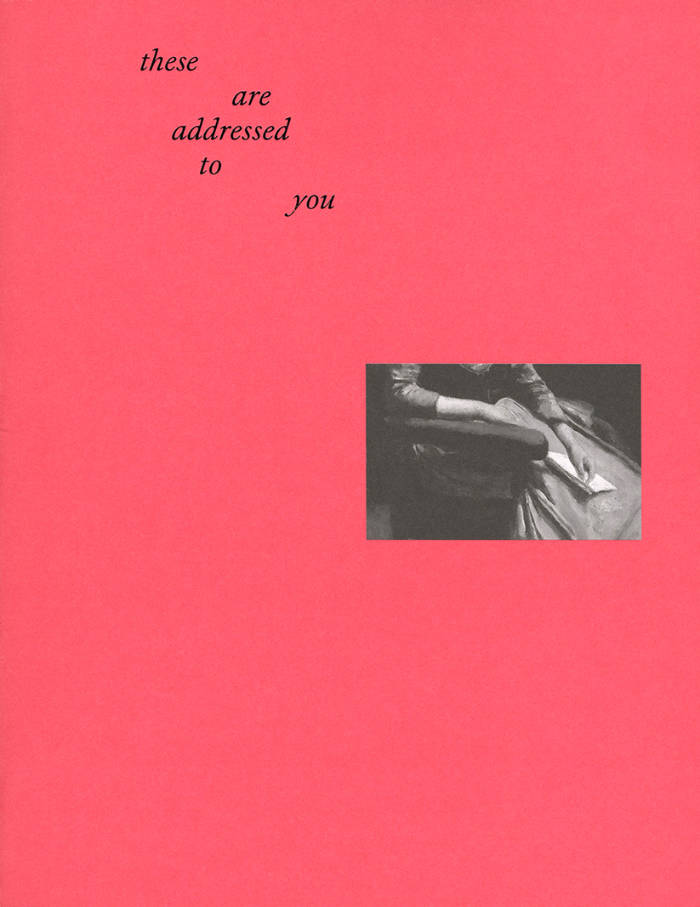
These are addressed to you
A collection of twenty-six abécédaire missives by Sharon Kivland, written and sent daily to the editors (MS & AWL) between Friday 7 February and Tuesday 4 March 2025. Interjected with melancholic ‘Mes horizons’ postcard erasures and an insert of abcedminded replies by Matthew Stuart titled ‘A Letter Always Suggests a Word’, this publication is both a standalone edition and precursor to BFTK#8, which focuses on letters (alphabets) and letters (correspondence).
‘These are Addressed to You’ addresses what it means to be addressed and to address, to write with love and scorn, to seal with a kiss and conceal impressions and hair within a letter’s folds, to inscribe with ink and thread, to speak with and to those we admire. Drawing on / from Freud and Lacan, Joyce and Carringdon, Camille Corot and many more, these letters are about writing and reading, about language falling and bumping you on the head.

The Assassination of Pier Paolo Pasolini in the Garden of Earthly Delights
Derek Jarman’s unrealised film treatment, The Assassination of Pier Paolo Pasolini in the Garden of Earthly Delights, takes as its subject matter the events leading up to and including the murder of Italian film director Pier Paolo Pasolini following the making of his final film Saló, or the 120 Days of Sodom in 1975.
Written in 1984, the setting of Jarman's film is inspired by the renaissance painter Hieronymus Bosch’s triptych, The Garden of Earthly Delights (1490-1500), a painting that depicts both the joys and perils of temptation, and which Jarman encountered on a visit to the Museo de Prado in Madrid the year he began working on the project.
For the first time, a facsimile of the treatment is presented alongside reproductions from the film's workbook, which show Jarman's calligraphic notes towards the film’s sequences, themes, cinematography, lighting, sound, costume, casting and props.
2025 marks fifty years since Pasolini's murder and thirty-two since Jarman’s death due to AIDS. Against a backdrop of funding cuts to the arts and the arrival of the HIV/AIDS epidemic that vanished away so many important artists and visionaries, The Assassination of Pier Paolo Pasolini in the Garden of Earthly Delights is a powerful elegy to the decadence of queer cinema and the tragedy of its last auteur.
Derek Jarman was one of the most influential British artists of the twentieth century. His practice, as diverse as it was prolific, spanned painting, sculpture, film, writing, stage design, gardening and activism. He was an outspoken campaigner for LGBTQIA+ rights, and was one of the first public figures in the UK to raise awareness for those living with HIV/AIDS, announcing his own HIV diagnosis on the radio in 1986.